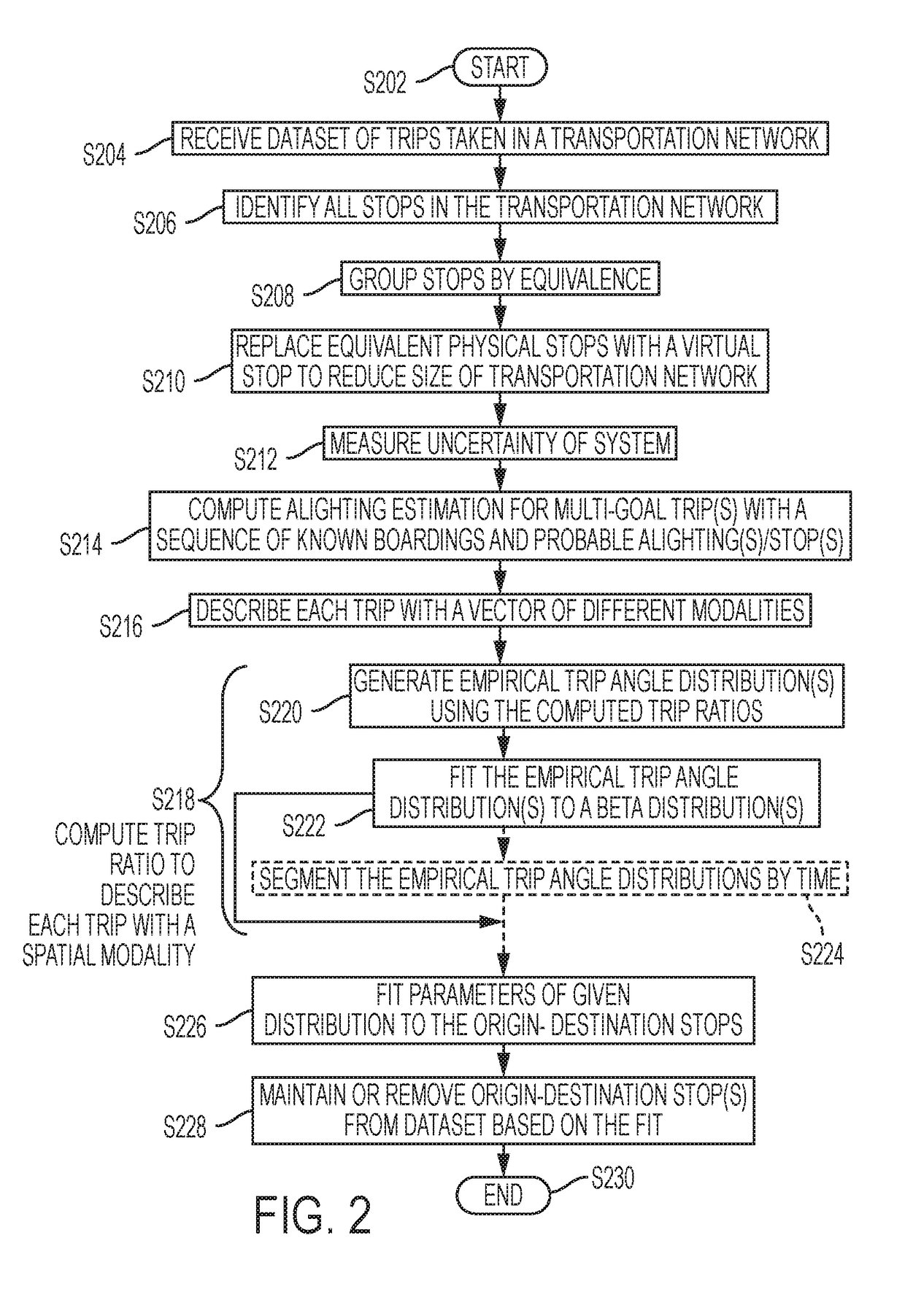Travel demand inference for public transportation simulation
a technology of public transportation and transportation demand, applied in the field of trip simulation in a transportation network, can solve the problems of unveiled limitations in accurately simulating transit trips, difficult to track passengers during transfers, and existing approaches that generate important divergence from observed results
- Summary
- Abstract
- Description
- Claims
- Application Information
AI Technical Summary
Benefits of technology
Problems solved by technology
Method used
Image
Examples
example 1
[0082]The disclosed method was tested on seven individual transit (o,d) pairs in a transporation network dataset. FIG. 11 shows an empirical trip angle distribution (top row) and a Beta distribution (bottom row) for the example dataset. Specifically, the
[0083]FIG. 9 shows (upper row) the empirical angle ratio distribution for seven different (o, d) pairs in Nancy dataset. Once they were used to fit the Beta distribution, the low row shows the PDF (probability distribution functions) with the corresponding (αi, βi) parameters.
[0084]Regarding the temporal modality, multiple transit trips exposed unexpectedly long transit times between public transportation services. These trips were likely multi-goal that cannot be properly modeled by a conventional trip planner. The temporal modality xte of a trip was introduced and parametrized as a Beta distribution. Any transfer during a trip was treated as a function of the distance between the stops, walking speed, vehicle (such as, bus) arrival...
example 2
[0085]The disclosed method was tested on dataset including 224,000 trips collected from a transporation network during a period of 3 months in 2012. The public transport system offered 27 bus and tram schedule-based services running along 89 different routes, and accounting for a total of 1129 stops. For the purpose of the example, only the datasets collected on workdays was evaluated. Trip data collected on holidays (vacation) and weekends was excluded.
[0086]The uncertainty measure was used to test different methods on the capacity to model the travel demand in the urban mobility context. Table 1 reports uncertainty measures when testing different combinations of methods described in the previous sections:
TABLE 1Uncertainty values for diff methods.MethodMinMaxAverageRaw0.984.612.39SE0.974.341.97SE + SBeta0.974.031.78SE + TBeta0.974.341.95SE + SBeta + TBeta0.974.001.72
wherein “Raw” means that raw data was used; “SE” means that stop equivalence classes were used to reduce the network...
PUM
 Login to View More
Login to View More Abstract
Description
Claims
Application Information
 Login to View More
Login to View More - R&D
- Intellectual Property
- Life Sciences
- Materials
- Tech Scout
- Unparalleled Data Quality
- Higher Quality Content
- 60% Fewer Hallucinations
Browse by: Latest US Patents, China's latest patents, Technical Efficacy Thesaurus, Application Domain, Technology Topic, Popular Technical Reports.
© 2025 PatSnap. All rights reserved.Legal|Privacy policy|Modern Slavery Act Transparency Statement|Sitemap|About US| Contact US: help@patsnap.com



